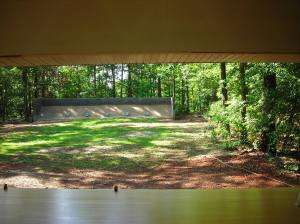Master Yozaburo Uno is credited with stating the following points regarding the main objectives of modern kyudo:
* to study the principles of shooting (Shaho) and the art of shooting (Shagi)
* to apply the formalized movements (Taihai) based on etiquette (Rei)
* to improve the level of shooting (Shakaku) and shooting dignity (Shahin)
* the necessity to strive for perfection as a human being
This one sentence on page 8 in the Kyohon sums up the first three objectives:
By combining the formalized movement, principles of shooting and art of shooting into a unified whole, this will produce shooting of dignity and refinement.
In a mathematical sense we could say:
Rei(Taihai+Shaho+Shagi) (Sanmi-Ittai)=Shahin
( I may need to work on this formula some, but for now, it’s working for me.)
With the first three objectives covered, that leaves the final objective… Nin Gen Kei Sei, the necessity to strive for perfection as a human being. (sigh) They had to go and complicate things.
As you learn through studying the Kyohon, there are no wasted words, diagrams or pictures therein. It all has meaning, right down to the footnotes. Most of page 9 is devoted to this final listed objective… improvement of self. Think about the scope this covers!
The Kyohon briefly states:
The key to Kyudo is both sincerity and courteousness. It is of more value to be sincere than to win against others…
I note from this that sincerity and courteousness go hand-in-hand here. We can be sincere, but if not done with courtesy in mind, we have lost in the long run.
It goes on to say:
…(It)is our hope that your Kyudo practice will have meaning in your daily life both spiritually and physically. Kyudo is not simply a way to create well-being and train the body, but a way to bring enhancement and cultivation to your life. We should consider the relevance to our training of such sayings of the past, as “Kyudo is Life” (Sha Soku Jinsei) or “Kyudo is Living” (Sha Soku Seikatsu). In this way, we as practitioners of Kyudo, who are expected to master such virtues as discipline, modesty, gentleness, self-restraint, and reflection through the shooting, can realize these qualities in our own life.
Wow!
Thank goodness for me, the “Stipulations for Examinations”, found on pages 125 and 126, for Dan and Kyu grades deal with form, shooting technique, and accuracy. But as you progress in rank and look at “Titular Grades” (Shogo), relating to Renshi, Kyoshi, and Hanshi, they start bringing into play that last and most important objective relating to self improvement… firmness of character, judgment, scholarship, cultivation, high conduct, dignity, and highest quality of discernment.
These qualities need to be worked on each and every day by every one of us! Chances are we will be put to the test each and every day. This was brought to the forefront of my mind recently when I read something that incited an internal rage within that I haven’t felt for a good long while. My mind went straight to war mode.
Gladly I have wonderful friends that have been in the art much longer than I and an excellent sensei that has never let me down. After talking with them and having time to ruminate, I realize that I can thank the author(s) of that article for sharing their comments. Although I can’t agree with them, through seeing their flaws, they have enabled me to see those of my own. In turn, I can love a part of them for doing this. We can always find good in our fellow man if we look deep enough. And, when it comes down to it, isn’t that what the baseline is.. love and compassion for ourselves and our fellow man?
Read Full Post »
